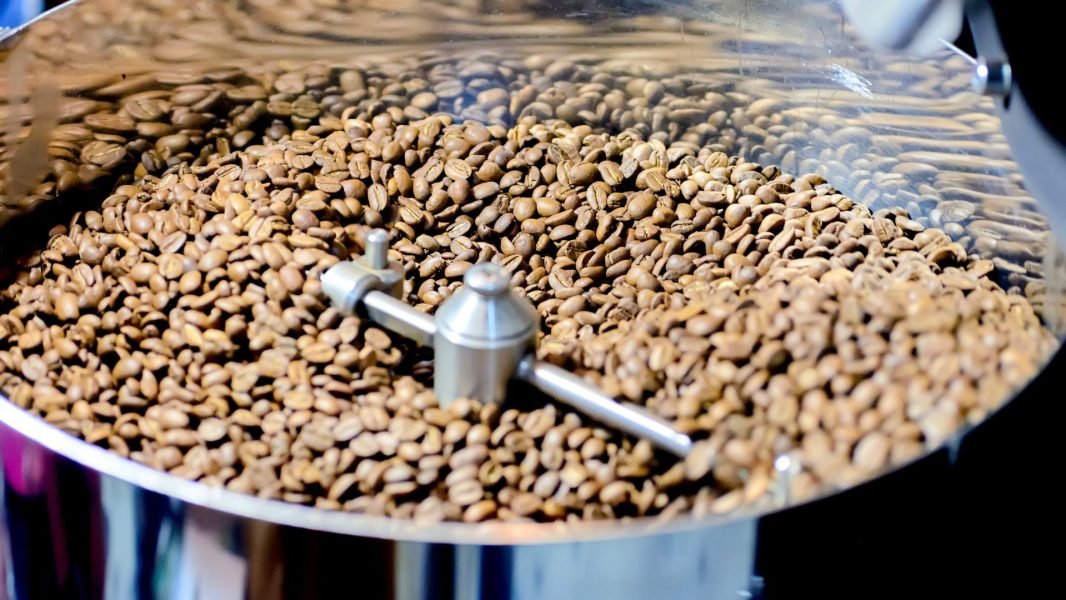Ever wonder how a grassy green bean becomes your bold morning brew? That magic happens during the process of coffee roasting, a journey where raw coffee beans are transformed into rich, flavorful delights. Whether you’re a coffee lover or aspiring home roaster, understanding this process is key to elevating your daily cup.
A Story in Every Bean: Why Coffee Roasting Matters
Picture this. It’s early. You stumble into the kitchen, craving that first hit of warmth and focus. As you grind fresh beans, the rich aroma fills the room. That smell, that anticipation? It all begins with the process of coffee roasting.
The transformation from green to brown isn’t just about heat—it’s about unlocking potential. Just a few degrees or seconds can dramatically affect your coffee’s flavor, body, and aroma. And that’s why this stage matters so much.
What Is the Process of Coffee Roasting?
The process of coffee roasting is a controlled application of heat to green coffee beans, driving chemical changes that develop aroma, taste, and color. This process is typically divided into three main stages:
1. Drying Stage
The roast starts by removing the moisture in green beans, which usually contain around 10% water. Roasters heat them to 160°C over 4–6 minutes, preparing them for chemical reactions. Mistakes here—too much heat or too little—can ruin the entire roast.
2. Browning Stage
As heat increases, beans begin to brown and release aromas. This is where the Maillard reaction happens, creating hundreds of flavor compounds. In the coffee roasting process, this stage is crucial for complexity and depth.
3. Development Stage (First Crack Onward)
After the “first crack,” the beans rapidly expand and release oils. This final stage locks in the flavor profile. A longer development time means darker, bolder flavors; a shorter one preserves brightness.
You’ll often hear roasters talk about timing this part carefully. In the process of coffee roasting, this stage defines the final character of your brew.
Understanding Roast Levels: Light to Dark

The coffee roasting process doesn’t end with color change—it opens the door to flavor exploration. Each roast level offers something different:
🌞 Light Roast
- Flavor: Fruity, floral, acidic
- Process Note: Beans are pulled soon after the first crack. Ideal for highlighting origin notes.
Curious about brewing techniques? Discover the best pour-over methods.
☕ Medium Roast
- Flavor: Balanced, sweet, chocolatey
- Process Note: Longer browning and development. A crowd favorite for its smooth body.
🌘 Medium-Dark Roast
- Flavor: Bold, spicy, bittersweet
- Process Note: Slight oil appears on the bean’s surface. Heavier body, lower acidity.
Want bold beans? Explore Sumatra coffee characteristics.
🌑 Dark Roast
- Flavor: Smoky, intense, bitter
- Process Note: Roasting continues well past the first crack. Oils fully coat the bean.
Robusta beans often use this profile. Learn more about specialty beans in Indonesia’s coffee guide.
Want to Try the Coffee Roasting Process at Home?
Home roasting is a great way to personalize your brew. But before jumping in, make sure you understand the process of coffee roasting in depth. Here’s what you’ll need:
- Green coffee beans – Try our picks from Aceh Gayo or Toraja
- Heat source – Popcorn poppers, oven trays, or a dedicated coffee roaster
- Timer & thermometer – Precision is everything in the roasting process
- Ventilation – Roasting releases smoke, especially at darker levels
The best part? You control the roast level. Want a fruit-forward flavor? Keep it light. Prefer bold and dark? Roast longer. The coffee roasting process gives you full creative freedom.
How to Store Freshly Roasted Coffee
After completing the process of coffee roasting, the next step is preservation. Beans degas for 24–48 hours, releasing CO₂. After that:
- Store in airtight containers
- Keep them in a cool, dark space
- Avoid the fridge or freezer (unless you follow proper freezing techniques)
- Use within 2–4 weeks for peak freshness
Want your beans to last longer? Read our coffee storage guide for expert tips.
Final Brew: Why the Process of Coffee Roasting Deserves Your Attention
The process of coffee roasting isn’t just a back-end operation at your local café—it’s the soul of the cup. From delicate floral notes to deep smoky aromas, roasting determines what you taste, what you smell, and how your coffee makes you feel.
It’s the reason one bean can taste like jasmine and another like dark chocolate. And if you roast at home, it’s your gateway to full control over your cup.
So ask yourself:
What flavors are you missing by not understanding the roast?
Whether you’re brewing, buying, or roasting, knowing the process of coffee roasting is your ticket to better coffee—every single time.
For more on coffee transformation, explore how it all starts with proper specialty coffee processing or discover the rise of specialty coffee culture.

